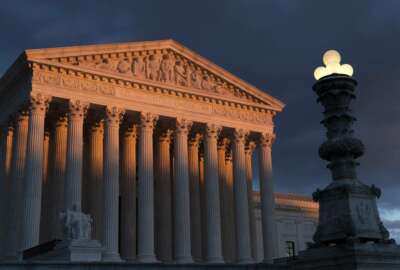Federal workers were shocked in January of this year, which in some ways feels like a long time ago, when their health insurance premiums went up by an average of 5.6%, while their pay raise was limited to 3.1%. Retirees — who pay the same premiums as workers in the same plans — were equally distressed by having to make do on a cost of living adjustment of only 1.6%. And that was before anyone had heard of, much less thought about, the possibility of something like the coronavirus. The 2020 inflation catchup, better known as a COLA or cost of living adjustment, also went to military retirees and the 1 in 6 Americans that receive a Social Security check. That’s one of the biggest financial events of the year. Recipients are often disappointed. But the worst is yet to come. The forecast for the future is bleaker still.
Given what’s happened to the world economy — not to mention tens of millions of people — the worst is almost certainly to come. While food prices, especially for things like pork, beef and eggs are going up, plus the economic impact of shutdowns and massive unemployment, create a depression like atmosphere. Deflation replaces inflation as the big worry.
Also the official cost of living adjustment countdown doesn’t begin for several months, many experts in and out of government are forecasting a January 2021 COLA of between 0.8% and 1%. For obvious reasons nobody has a handle on where health care costs/insurance premiums are going because of the pandemic. But they aren’t going down.
The end of the pandemic is not in sight. Not by a long shot. But in just a short time it has had a major and probably long lasting impact on the world economy and what you must spend vs. what you will have to spend for years to come. Millions of people out of work worldwide right now. Many will be returning to the workforce, and when they do, their jobs may be very different. Businesses closed that will never return. Ships backed up in harbors. Even oil, which was once king, for a moment sold at zero dollars per barrel.
Insurance companies have taken and will continue to take a major hits this year. And maybe for years to come. The last time federal premiums were adjusted for long-term-care policy holders they went up as much as 126% for the 264,000 policy holders. Many had to downsize their coverage to keep from paying the full new, higher premium. For more on that, click here.
Earlier this week we heard from a VA retiree who has been crunching the numbers and looking at the price of oil. He’s also aware of the big government bailouts of the last several weeks, with more to come. And of the financial squeeze workers and retirees are likely to feel next year when premiums jump. Perhaps a lot. Given the big financial bailouts the government has provided millions of furloughed individuals, how likely are Congress and the White House to give federal workers — who still have jobs, health insurance and leave — a pay raise in 2021? Last year, at a time of unprecedented prosperity, the president offered civil servants a 1% raise for 2020 at the last minute. Congress raised the ante. And there is an on-going effort by House Democrats to give government employees a 3.5% raise in 2021. But most of that was generated before the pandemic hit, jobs started disappearing and state local governments (most of whom are required to have balanced budgets) started laying off state and local government employees in districts and states where those people will likely be motivated to vote in November.
Meantime here’s what retiree COLAs and worker pay raises have looked like in recent years:
Retiree COLAs:
- 2020: 1.6%
- 2019: 2.8%
- 2018: 2.0%
- 2017: 0.3%
- 2016: 0%
- 2015: 1.7%
- 2014: 1.5%
- 2013: 1.7%
- 2012: 3.6%
- 2011: 0%
- 2010: 0%
- 2009: 5.8%
White Collar Federal Pay Raises:
- 2020: 3.1%
- 2019: 1.4 %
- 2018: 1.4%
- 2017: 1.0%
- 2016: 1.0 %
- 2015: 1.0%
- 2014: 1.0%
- 2013: 0.0%
- 2012: 0.0%
- 2011: 0.0%
- 2010: 0.5%
- 2009: 2.9%
Nearly Useless Factoid
By Alazar Moges
On June 17, 1994, the day of the infamous O.J. Simpson police chase around Los Angeles, Domino’s Pizza set record sales numbers at that time only comparable to Super Bowl night. “It was a record night at the time. It was dinner time on the West Coast and 9 p.m. on the East. People were fascinated and didn’t want to miss it,” said VP of corporate communications for Domino’s Pizza Tim McIntyre.
Source: CBS Sports
Copyright
© 2024 Federal News Network. All rights reserved. This website is not intended for users located within the European Economic Area.
